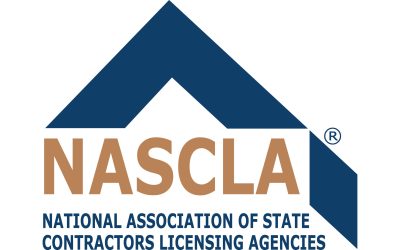Conquering Your License Exam
Ace Your License Exam: A Step-by-Step Study Guide
Hey there, future license holder! We know you’re serious about getting that license, and we want to help you succeed. Whether your exam is open book or closed book, the key is getting familiar with the references recommended in the Candidate Information Bulletin (CIB). This will make you a whiz at finding information during the exam, regardless of the format.
Here’s the lowdown on how to conquer your studies:
Start Early, Reap the Benefits (Step 1):
Don’t wait until the last minute to cram! Aim to start studying at least 3-6 weeks beforehand. The earlier you begin, the more time your brain has to absorb and retain the information.
Step 2: Find Your CIB – Your Exam Roadmap:
Think of the CIB as your treasure map to exam success. It tells you everything you need to know about the specific areas your exam will focus on. You can find your CIB by visiting your state’s licensing board website or the exam provider’s website (often run by the state government). If you get stuck, don’t hesitate to reach out to us for help!
Step 3: Gear Up with the Right References:
We don’t sell reference materials ourselves, but we can be your friendly neighborhood guide. Our website has links to publishers, booksellers, and even free PDFs or HTML versions of references (and statutes) when available.
Step 4: Highlight Like a Pro (Step 4):
Once you have your references, use the CIB to identify the subject areas that will be covered on the exam. Highlight or tab these areas in your reference materials. You can even color-code them based on the importance (number of questions) mentioned in the CIB.
Step 5: Not All Codes Are Created Equal (Step 5):
Exam bulletins often reference large sections of code, but chances are, you won’t need to study everything. Focus on the sections that directly apply to your trade. For instance, if you’re taking a General Builder exam, any section of the building code would be relevant.
Step 6: Craft Your Study Schedule – Be Realistic (Step 6):
Grab a calendar and mark your exam date along with any other commitments you have. Be honest with yourself about how much study time you can realistically dedicate each day. Prioritize the subject areas based on their importance and how many questions they cover on the exam.
Avoid Burnout! Take Breaks!
Studying for long stretches can be overwhelming. Aim for study sessions of no more than two hours at a time. Take breaks in between to refresh your mind – grab a coffee, step outside, or do a quick brain break activity.
Step 7: Practice Makes Perfect (Almost!):
Our practice exams are a fantastic way to test your knowledge and get comfortable with the question format. When you take a practice exam, make notes on where you found the answers in the reference materials. This will help you solidify your understanding of the concepts.
Step 8: Learn Your Way:
We all learn differently! Some people learn best by seeing things written down (visual learners), others by hearing them (auditory learners), and some by doing hands-on activities (kinesthetic learners). Figure out what learning style works best for you and tailor your studying accordingly.
Step 9: Don’t Get Lost in the Notes:
Our practice tests are a great starting point, but don’t just rely on them blindly. Use the CIB’s subject area list to focus on the most relevant information. Don’t be afraid to explore the reference materials and make connections between different topics.
Step 10: Deep Dive with the Answer Key:
Most questions in our practice exams have an answer key with the exact citation from the reference material. Use this to your advantage! Highlight important information in your references and make notes to create a strong understanding of the concepts.
Step 11: Keep Your Notes Organized:
Don’t let your notes become a jumbled mess! Keep them all together – either write them directly on the printed materials or use the comment tool in a PDF file. Review your notes regularly, especially when revisiting the tabbed sections in your references.
Step 12: Embrace the Challenge, Decipher the Code:
Codes and legal documents can be tricky beasts, filled with complex sentences and legalese. Don’t get discouraged! Take the time to break down confusing sections and rewrite them in a way that makes sense to you.
Bonus Tip: Find a Code-Breaking Buddy:
Consider reaching out to a law student

See how much knowledge you have with our Walker’s Builders Estimator’s Reference Test
Check out all of the tests we offer at Contractor Practice Exam
California C39 Roofing Free Practice Test
California Roofing C39 Free Practice Test(California) C39 Roofing Free Practice Test.Welcome to the timed free practice test on California C39...
California C39 Roofing Practice Test
California Roofing C39 Practice Test(California) C39 Roofing Practice Test.Are you ready to take the next step toward becoming a licensed roofing...
California Law and Business Practice Test
California Law And Business Practice Test(All trades) Knowledge needed for multiple licenses. Why spend hundreds on expensive prep courses when you...
California Health and Safety Free Practice Test
California Health and Safety Free Test(All trades) Knowledge needed for multiple licenses.Are you ready to ace your California Health and Safety...
Roofing Construction & Estimating, Revised Free Practice Test
Roofing Construction & Estimating, Revised Free Test(Roofing) Knowledge needed for multiple states for Roofing licenses.Welcome to the free...
NASCLA Contractors Guide To Business and Project Management Free Test
NASCLA Contractors Guide To Business and Project Management Free Test(Business & Finance) Knowledge needed for multiple states for multiple...
Illinois Commercial and Industrial Practice Exam
Illinois Commercial and Industrial Roofing Practice Test(Illinois) You must have the Residential Roofing License to take the examWelcome to the...
Illinois Unlimited Roofing License Practice Test
Illinois Unlimited Roofing Practice Test(Illinois) Residential Commercial and Industrial Welcome to the timed practice test to obtain an Illinois...
Illinois Residential Roofing Practice Test
Illinois Residential Roofing Practice Test(Illinois) For roofing work on residential buildings in IllinoisAre you ready to pass your Illinois...






